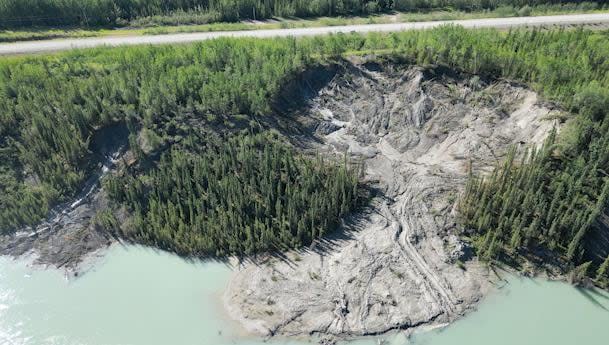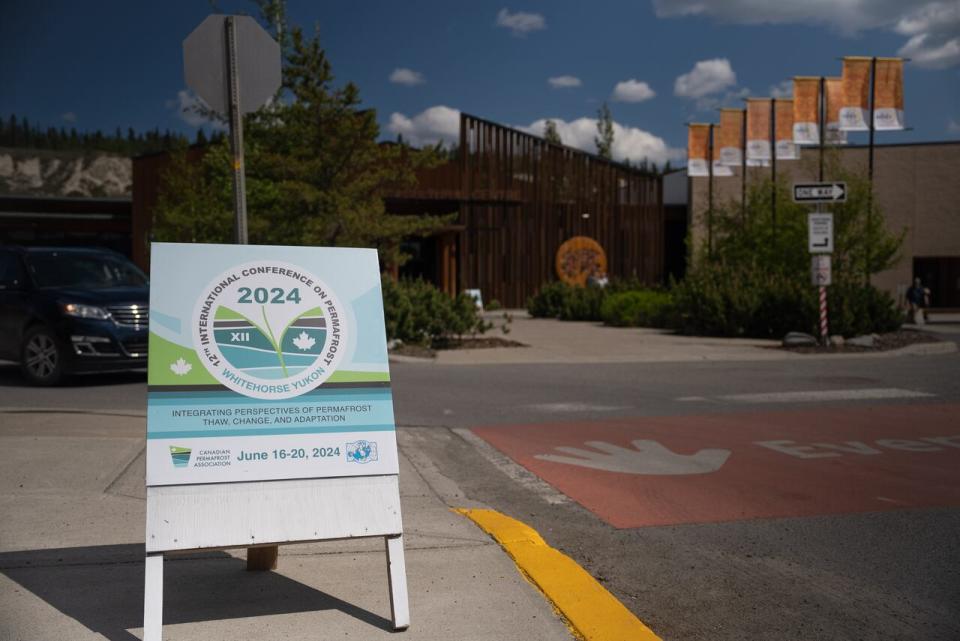Researchers, engineers flock to Yukon to see permafrost thaw in action
Kathrin Maier, a PhD student in environmental engineering studies permafrost-thaw slumps, but before this week she'd never seen the phenomenon up close.
Maier, who works in Switzerland at the university ETH Zurich, is among the delegates in Whitehorse this week for the International Conference on Permafrost. She said she was excited to be in "permafrost territory."
"I've never seen [a thaw slump] in my life, and it's just like a 30-minute drive [away]. So I think that's actually an amazing opportunity, to have it here and really see the stuff we research on, in person," she said.
"Especially if you do remote sensing, and you normally don't get into the field."
The international conference happens every four years and this is the first time since 1998 that it's been held in Canada. It brings together scientists, engineers, and people who live on the land, to talk about the latest research on permafrost thaw, and adaptation.
"We wanted to bring the international community to the North, to a place where they see people living on permafrost and [see] the change that's happening currently in a permafrost environment," said conference chair Lukas Arenson, who's a consulting engineer based in Vancouver.
The event — which began Sunday and runs until Thursday — involves oral presentations as well as online discussions for people who are not there in person.
"The permafrost... the frozen ground, brings us together," Arenson said.
As part of the conference, Arenson said it was important to arrange field excursions to see evidence of environmental change.

In the Yukon, thawing permafrost has long posed a threat to infrastructure such as buildings and roads. Just west of Whitehorse on the Alaska Highway, a permafrost slump has recently been threatening part of the highway as it has slowly moved closer to the road.
As a result, the territorial government announced last year that it will move the road out of concern for its "long-term viability."
"We're making sure that while the researchers, engineers, are here, they're not just sticking here to the Kwanlin Dün Cultural Centre, but they go out into the land and have the opportunity to see permafrost in action," Arenson said.
Claire O'Hagan, a master's student at York University who studies permafrost thaw in the Mackenzie Delta region, said it's important for researchers to work together and share knowledge.
"The Arctic environment is so diverse and different that learning what's going on in other areas is very important," she said.
"Understanding the research here can almost serve as a warning sign and help us understand what we could expect to see in other areas of the globe, as climate change continues to progress."

Arenson said one of the topics being discussed this year is how artificial intelligence is being increasingly used in permafrost research. He says machine learning can make it much easier to map landforms and track changes.
"So rather than having to go on a map and manually outline changes, we now can train computers to do that for us. And that helps a lot in understanding regional changes," he said.
"So having those tools available to us, to the scientific community, is, I would say, a game-changer in some areas."


